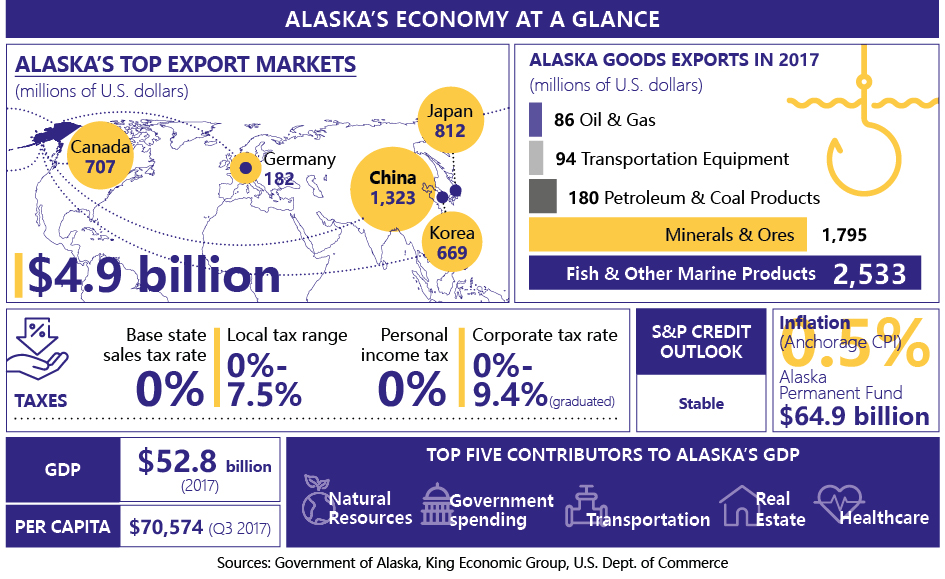Alaska’s recession is driving the state and its business community to focus on seizing new opportunities. From the pipeline project that has the potential to transport $1 trillion worth of liquid natural gas to China to a new emphasis on burgeoning sectors like tourism, Alaska’s economic future is bright and deeply rooted in internationalization

Recent times have undoubtedly been challenging for the Alaskan economy. The state, which is highly dependent on oil, was hit hard when the price of crude crashed to $26 a barrel at the end of 2014. However, as has been the case throughout Alaska’s history, the resilient state is using its unique characteristics to build a strong foundation for the growth of tomorrow, and efforts to diversify the economy and take better advantage of its natural resources are well underway.
When Alaska became a state in 1959, it was granted more than 400,000 square kilometres of public land, and became the only U.S. territory with exclusive ownership of the resources in the ground. In the agreement, the new state, which was the largest in the country but with one of the smallest populations, had a clear mandate – develop its mineral resources to establish a viable economy and support the costs of self-government.
That is exactly what it did. In 1977, the first of billions of barrels of oil travelled through the enormous Trans-Alaska Pipeline System (TAPS) and was marked as a transformational moment in the state’s economy. Thanks to that bonanza, and other resources, the state has managed to pay out billions of dollars to its citizens, and still maintain an additional $64.9 billion in its sovereign fund, the Alaska Permanent Fund, as of 2018.
And while oil production activities continue in the state and new, valuable areas have been opened up for exploration in the Arctic National Wildlife Refuge, oil’s dramatic loss in value came as a wakeup call for a state that was overly exposed to the fluctuating price of crude.
One major diversification effort, which Gov. Walker said is the state’s “most promising economic opportunity,” is the Liquid Natural Gas (LNG) Pipeline project to be created in partnership with China. The $43 billion pipeline would transport Alaska’s immense supply of natural gas to China, and massively boost Alaska’s economy while also bringing down energy costs in China and reduce its carbon emissions by 80 million tons per year.
“It would also have a positive impact on the trade deficit, so it really is a win-win-win situation. The federal government wins, the national government of China wins, and Alaska wins, so it’s a perfect project at exactly the right time,” said Walker.
But besides natural resources, the state is promoting economic diversity in sectors including tourism, construction, trade and technology, and has seen a rise in entrepreneurs finding global success.
“The reason I am in business here is that there was opportunity… Here, the challenges and the opportunities go hand in hand, which is one of the reasons why people fall in love with Alaska. It’s so unique,” said Barbara Cash, CEO of RIM Design, an award-winning Alaskan interior design company.
Today, Alaska welcomes a record-breaking number of tourists, and has been increasing exports of its world-class fish products around the globe. Mining, which provides 8,600 high-paying jobs, is also in an optimistic position due to new projects that could add millions of dollars in revenue, including copper, cobalt, zinc and lead mines. Elsewhere, initiatives in the forestry sector are ensuring the industry is sustainable in the long term. Likewise, the Alaska Industrial Development and Export Authority has invested more than $425 million in Alaskan businesses and projects and leveraged more $1 billion in private investment since 2015.